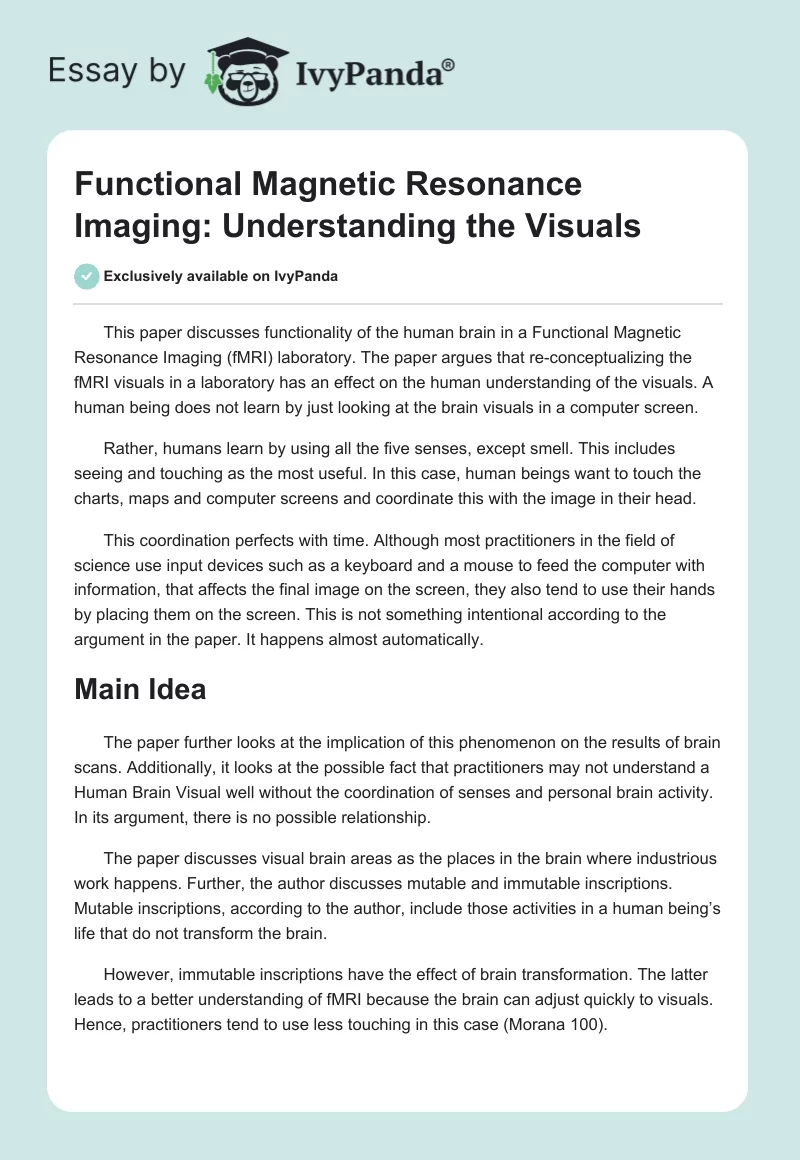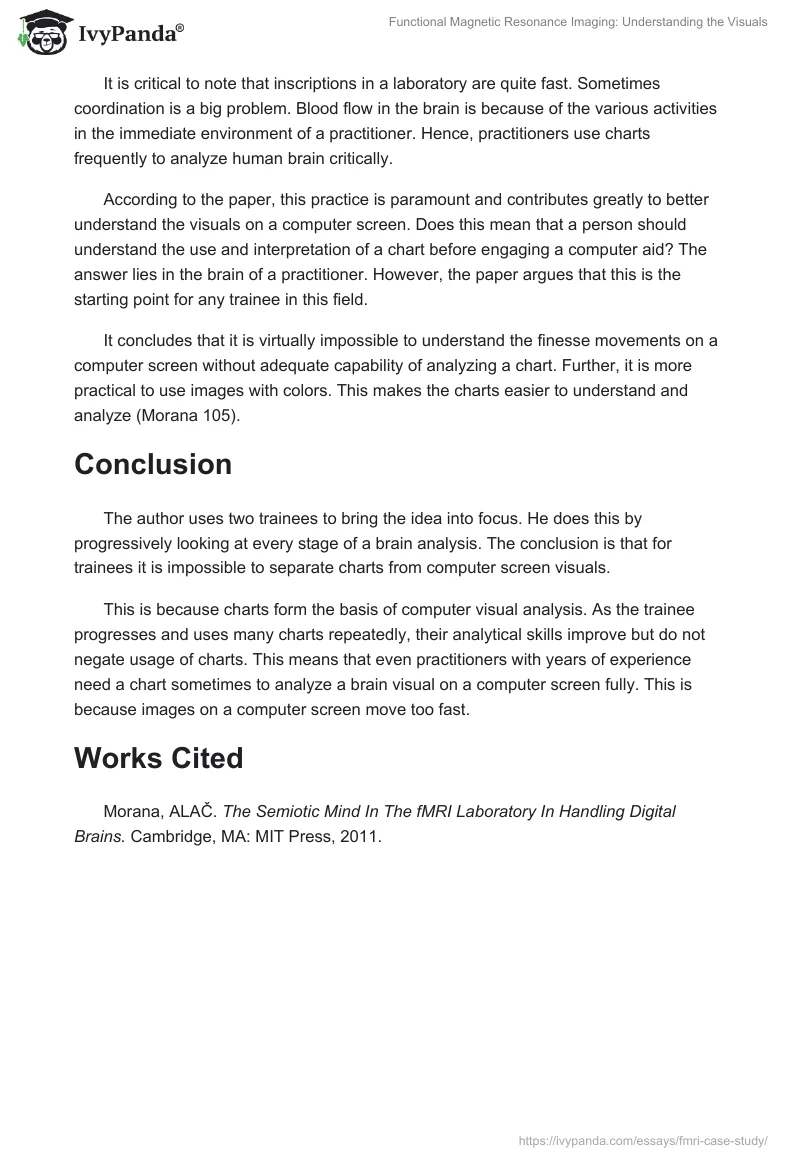This paper discusses functionality of the human brain in a Functional Magnetic Resonance Imaging (fMRI) laboratory. The paper argues that re-conceptualizing the fMRI visuals in a laboratory has an effect on the human understanding of the visuals. A human being does not learn by just looking at the brain visuals in a computer screen.
Rather, humans learn by using all the five senses, except smell. This includes seeing and touching as the most useful. In this case, human beings want to touch the charts, maps and computer screens and coordinate this with the image in their head.
This coordination perfects with time. Although most practitioners in the field of science use input devices such as a keyboard and a mouse to feed the computer with information, that affects the final image on the screen, they also tend to use their hands by placing them on the screen. This is not something intentional according to the argument in the paper. It happens almost automatically.
Main Idea
The paper further looks at the implication of this phenomenon on the results of brain scans. Additionally, it looks at the possible fact that practitioners may not understand a Human Brain Visual well without the coordination of senses and personal brain activity. In its argument, there is no possible relationship.
The paper discusses visual brain areas as the places in the brain where industrious work happens. Further, the author discusses mutable and immutable inscriptions. Mutable inscriptions, according to the author, include those activities in a human being’s life that do not transform the brain.
However, immutable inscriptions have the effect of brain transformation. The latter leads to a better understanding of fMRI because the brain can adjust quickly to visuals. Hence, practitioners tend to use less touching in this case (Morana 100).
It is critical to note that inscriptions in a laboratory are quite fast. Sometimes coordination is a big problem. Blood flow in the brain is because of the various activities in the immediate environment of a practitioner. Hence, practitioners use charts frequently to analyze human brain critically.
According to the paper, this practice is paramount and contributes greatly to better understand the visuals on a computer screen. Does this mean that a person should understand the use and interpretation of a chart before engaging a computer aid? The answer lies in the brain of a practitioner. However, the paper argues that this is the starting point for any trainee in this field.
It concludes that it is virtually impossible to understand the finesse movements on a computer screen without adequate capability of analyzing a chart. Further, it is more practical to use images with colors. This makes the charts easier to understand and analyze (Morana 105).
Conclusion
The author uses two trainees to bring the idea into focus. He does this by progressively looking at every stage of a brain analysis. The conclusion is that for trainees it is impossible to separate charts from computer screen visuals.
This is because charts form the basis of computer visual analysis. As the trainee progresses and uses many charts repeatedly, their analytical skills improve but do not negate usage of charts. This means that even practitioners with years of experience need a chart sometimes to analyze a brain visual on a computer screen fully. This is because images on a computer screen move too fast.
Works Cited
Morana, ALAČ. The Semiotic Mind In The fMRI Laboratory In Handling Digital Brains. Cambridge, MA: MIT Press, 2011.


